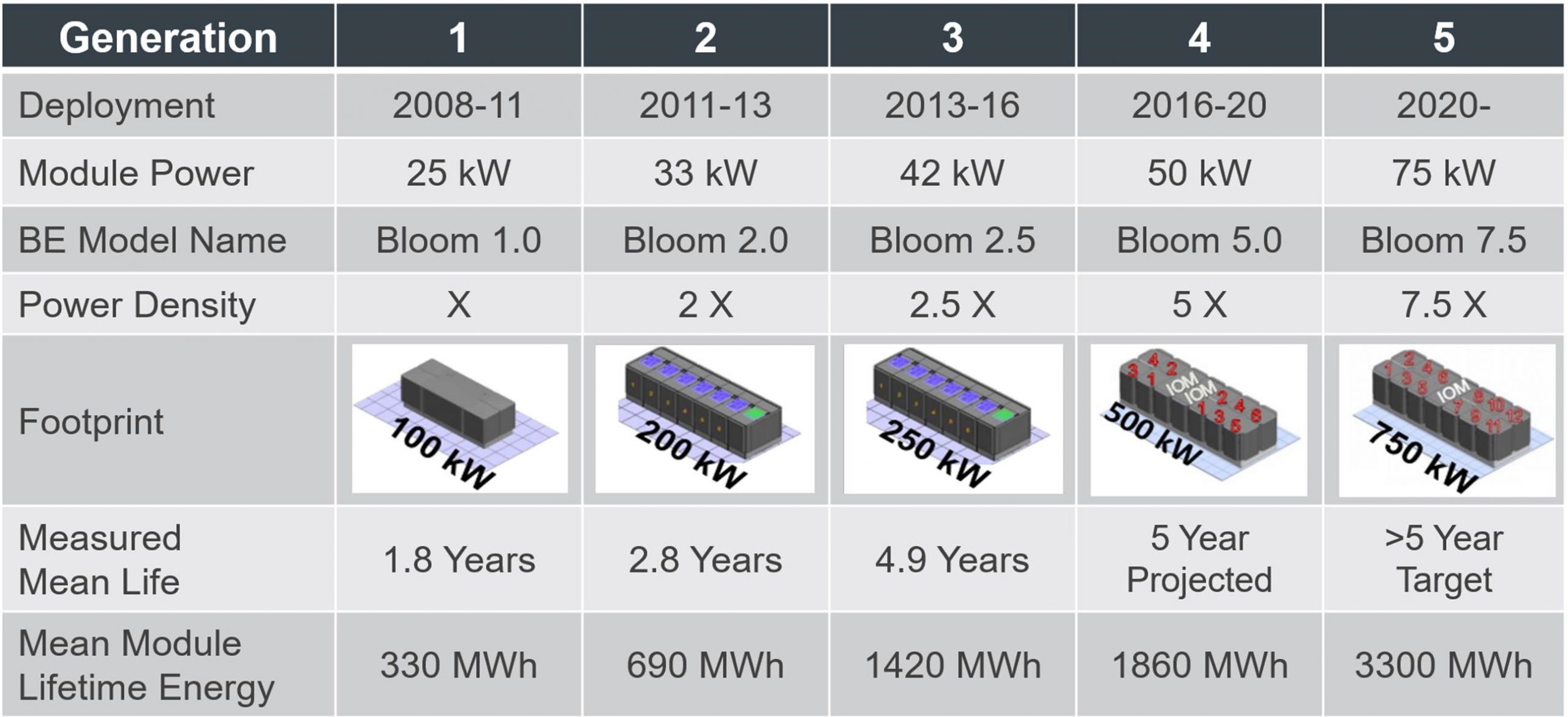2020 has so far been a year characterized by unpredictability. There have been natural disasters, extreme weather events, and a pandemic – all in short order. While it is difficult to prevent any of these occurrences, it is possible to control how we prepare and how we deal with the aftermath, which – in every case – would benefit greatly from a source of always-on, reliable, clean energy.
This is where American ingenuity steps in. Bloom’s fuel cell technology was born out of a distinctly American innovation ethos; it was invented in the United States and manufactured in Bloom’s Newark, Delaware, and Sunnyvale, California, manufacturing facilities.
Bloom has created the first – and, to date, only – large-scale, commercially viable solid-oxide fuel-cell based power generation platform that is capable of producing base-load, off-grid power. Since its first-generation technology, the company has reduced the costs of our systems by more than 7x, increased the output of our systems by more than 7x through the next generation of Bloom’s Energy Servers, and increased the life of our fuel cells by over 2.5X.
Our technology is designed to offer one of the most resilient electricity solutions available for a world facing unacceptable and unprecedented levels of power disruptions. This means the customers we serve can continue to power their businesses through these events and can support their customers at these critical times of need.
Fuel Cell Reliability
Since inception, the field performance of our fuel cells has continued to achieve new milestones.
Since 2009, Bloom has deployed a fleet of more than 20,000 Fuel Cell Modules (FCMs) – for which it has full responsibility to operate, monitor and service. This fleet now has grown to a global capacity of nearly 500 MW of power and has produced more than 16 Billion kW-hours of energy over the past 10 years. Bloom receives real-time information on the performance of these systems through our Remote Monitoring Control Center (RMCC) and studies this data carefully to improve the performance, rate of degradation and life of this fuel cell technology over time.

This effort is fueling rapid improvement in Bloom’s fuel cell technology. As a result, Bloom’s fuel cells – deployed in 2014 and 2015 – have a median recorded life of 4.9 years, nearly three times improvement over the life of its first-generation fleet.
Bloom’s fuel cells in the field since 2016, have a power density five times greater than its first-generation products. Bloom’s next-generation fuel cells will be deployed as beta units starting late this year into 2021 and will have an additional 50 percent increase in power density and further lifetime and energy improvements.
All told, Bloom has so far has operated more than 900 fuel cells for more than 5 years, with a maximum life to date of 7.7 years. Another 9000-plus are running in the one- to five-year range and have not yet had the opportunity to reach five years. In terms of lifetime energy, Bloom has operated over 450 fuel cell modules beyond 1500 MWh with the highest output energy to date reaching over 2100 MWh.

Fuel Cell Service
Many of Bloom’s customer contracts include a 10- to 20-year service commitment. The modular system allows Bloom to swap these fuel cells on-site in under an hour when the original fuel cells require replacement. Once removed, the fuel cells are sent to Bloom’s Repair and Overhaul Center, where the unit is refurbished before returning to the field for continued generation of power. Drawing from longstanding expertise and capabilities in product end-of-life management, Bloom Energy Servers are designed with full product life-cycle sustainability in mind, and the reuse of components within its systems are maximized.
As Bloom replaces fuel cells, it also upgrades the technology on-site to achieve greater performance, life and efficiency, and to reduce service costs. Through the available performance data, the company develops and maintains in-depth service models to ensure it can provide the performance expected over the duration of the contract within the customer’s service budget.
AlwaysON Microgrids
Building on this fuel cell experience and performance, Bloom’s AlwaysON Microgrid solutions can be operated independent of the power grid – providing power resiliency for business customers.
- Bloom Energy Fuel Cells generate clean and economical power for customers on-site, meaning there is no dependence on transmission lines.
- In normal operation, Bloom is connected to the grid so the site can pull power from the grid during peak power demand periods but is also able to export excess power to the grid when the fuel cell generation is greater than customer demand.
- In the event of a grid outage, the AlwaysON Microgrid solution electrically disconnects from the grid to continue to power customer-critical loads with Bloom fuel cells to keep them in business.
- When the grid returns and stabilizes, Bloom’s system will then re-connect to the grid and operate in normal grid-parallel mode again.
In contrast, large diesel generators – which are expected to be idle 99 percent of the time – are unreliable, costly to purchase and maintain and produce high levels of noise, particulate, NOX and SOX pollutants and CO2. It is hard to imagine any business – much less a hospital or medical center – would want that today.
Bloom microgrids have supported customers through more than 1500 power outages since 2018. In each case, customers – including hospitals and medical centers, biomedical and emergency response centers, data and telecommunications centers, and grocery stores and big box hardware stores – were able to continue to operate uninterrupted to support their critical customers at a time of need. This proven solution is available now.
Transitions are often difficult and met with resistance. Doing something new is not always easy. But just as we moved from landlines to cell phones – and now can’t imagine life without these devices – we are on the cusp of a transformation from total dependence on the fragile power grid “landline” to the freedom, independence and security that Bloom microgrids provide.
As widespread disasters and power interruptions occur with more frequency, Bloom has a proven solution to provide power security for your business that is also green and cost-effective. That solution is the Bloom AlwaysON Microgrid, powered by Bloom fuel cells.



